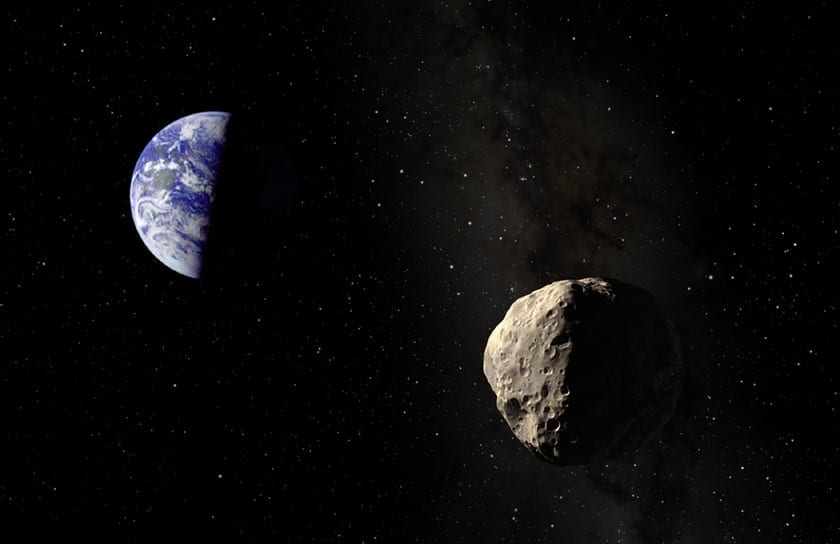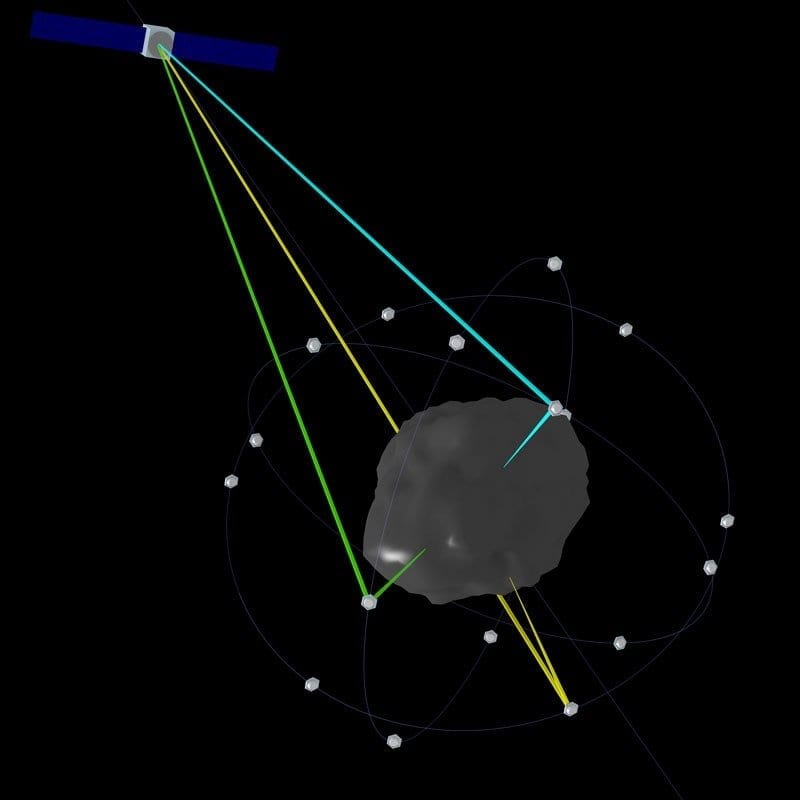
Protecting Earth from asteroid impact with a tethered diversion
via The Planetary Society
The use of a tether assisted system could prevent an asteroid impacting Earth without the risk of fragmentation.
Our planet exists within the vicinity of thousands of Near-Earth Objects (NEOs), some of which – ?Potentially Hazardous Asteroids (PHAs)? – ?carry the risk of impacting Earth causing major damage to infrastructure and loss of life. Methods to mitigate such a collision are highly desirable. A new paper published in EPJ Special Topics, authored by Flaviane Venditti, Planetary Radar Department, Arecibo Observatory, University of Central Florida, Arecibo, suggests the use of a tether assisted system to prevent PHA impact.
The method suggested by Venditti and her colleagues involves using the tether – ?previously suggested for other uses, such as space/lunar elevators and tethered satellite system? – ?to connect the threatening PHA to another, smaller, asteroid, thus changing the centre of mass of the two and hopefully raising the PHA to a safer orbit.
Each potential PHA impact mitigation method carries with it, its own set of benefits and risks. A considerable risk associated with ‘high-impact’ mitigation techniques, such as the detonation of explosives at the surface of the PHA, is fragmentation. This makes methods which gradually alter the orbit of a PHA, and thus prevent the break up of such an object, look like a less risky prospect. The tether system carries with it little risk of causing fragmentation and smaller pieces of the PHA falling to earth, something which could itself cause widespread damage.
Using the asteroid Bennu as a test subject, the team used computer simulations to calculate the dynamics of such a tether system for a variety of different initial conditions, concluding that it would be feasible for use as a planetary defence system. The team also suggest that the system could be of use in both the study and potential mining of NEOs and other asteroids.
One of the likely drawbacks of such a method is the fact that it could require a longer lead time than many high impact methods which quickly deliver kinetic energy to a PHA to knock it out of orbit. Thus, the continued cataloguing of such objects is needed if such a method is ever to be viable.
The Latest Updates from Bing News & Google News
Go deeper with Bing News on:
Asteroid deflection
- ‘Lucy’s baby’ asteroid is only about 2 to 3 million years old
The moonlet orbiting the asteroid Dinkinesh is 'an extraordinarily unique and complex body.’ By Laura Baisas | Published May 3, 2024 9:26 AM EDT A pair of stereoscopic images of the asteroid ...
- Asteroid that exploded over Berlin was fastest-spinning space rock ever recorded
Scientists have calculated the rotational speed of asteroid 2024 BX1, which exploded over Berlin earlier this year, by letting it trail in images of the sky. It turns out, 2024 BX1 was spinning ...
- Scientists say they’ve traced the origins of a potentially hazardous near-Earth asteroid to the far side of the moon
An unusual asteroid traveling near Earth is thought to be a chunk of the moon, but exactly how it ended up zooming through the solar system has remained a mystery. Now, researchers say they’ve ...
- Asteroid hunters spot 27,500 overlooked near-Earth asteroids — more than were discovered by all of the world’s telescopes last year
Asteroid hunters have identified 27,500 overlooked near-Earth asteroids using cutting-edge tech that could potentially stave off armageddon in the future. Instead of stargazing with a traditional ...
- This spacecraft is headed to NASA's asteroid-crash aftermath — but first, it'll stop by Mars
After Hera speeds past Mars, it's onward to Didymos and its now -misshapen companion Dimorphos (thanks to the collision), where the spacecraft will gather information on the asteroid to better ...
Go deeper with Google Headlines on:
Asteroid deflection
[google_news title=”” keyword=”asteroid deflection” num_posts=”5″ blurb_length=”0″ show_thumb=”left”]
Go deeper with Bing News on:
Tether assisted asteroid system
- Asteroid Ryugu holds secrets of our solar system's past, present and future
Samples collected from asteroid Ryugu appear to hide secrets of the solar system's past, the bombardment that asteroids presently endure as they drift between planets, and perhaps even the blueprints ...
- This spacecraft is headed to NASA's asteroid-crash aftermath — but first, it'll stop by Mars
After Hera speeds past Mars, it's onward to Didymos and its now -misshapen companion Dimorphos (thanks to the collision), where the spacecraft will gather information on the asteroid to better ...
- Killer Asteroid Hunters Spot 27,500 Overlooked Space Rocks
On Tuesday, those scientists, with the Asteroid Institute and the University of Washington, revealed an even bigger bounty: 27,500 newly identified solar system bodies. That is more than were ...
- New tether system provides Vesper unlimited flight time
Responding to the market demand for tethered systems compatible with blue UAS drones, Volarious has launched the V-Line Pro, initially featuring a 25-meter (82 feet) tethered line and a new ...
- NASA destroyed an asteroid and now it might collide with Mars
For those that don't know, NASA launched a vending machine-sized spacecraft at an asteroid system that contained two space rocks, Didymos and Dimorphos. Dimorphos, the smaller of the two ...
Go deeper with Google Headlines on:
Tether assisted asteroid system
[google_news title=”” keyword=”tether assisted asteroid system” num_posts=”5″ blurb_length=”0″ show_thumb=”left”]










